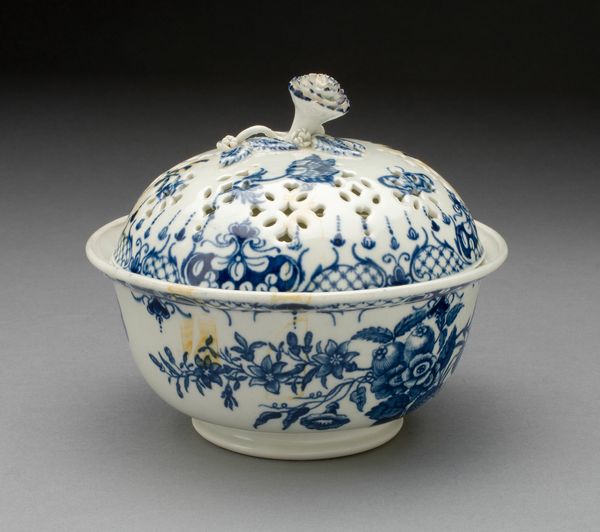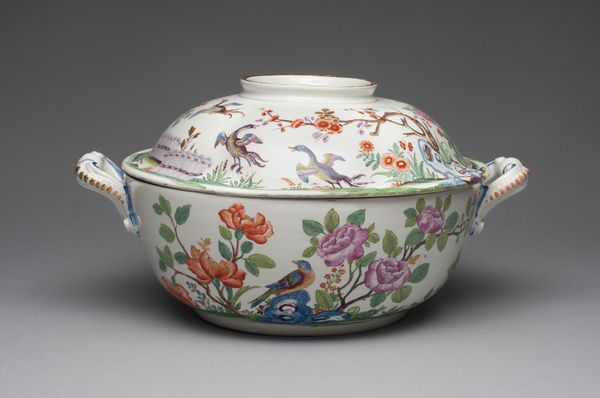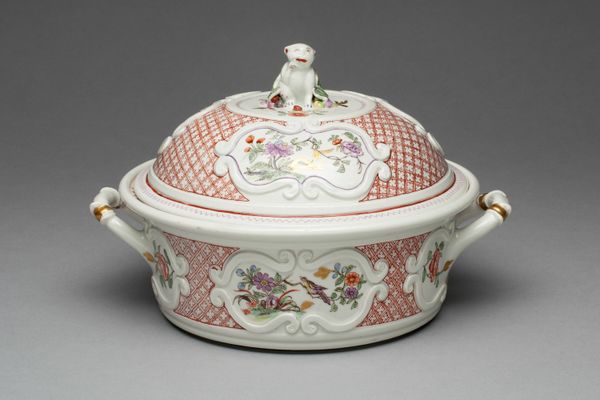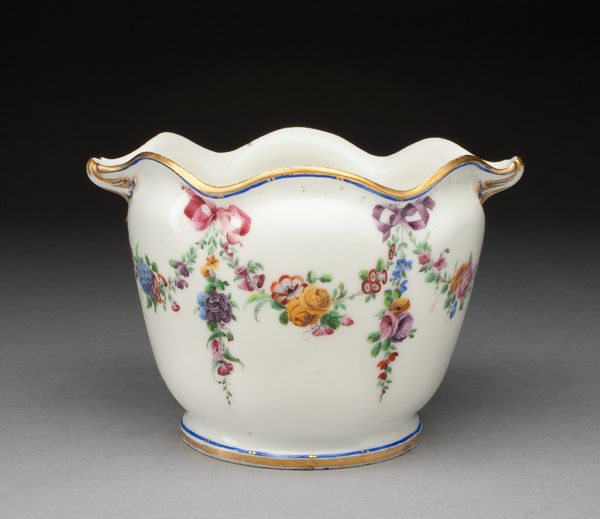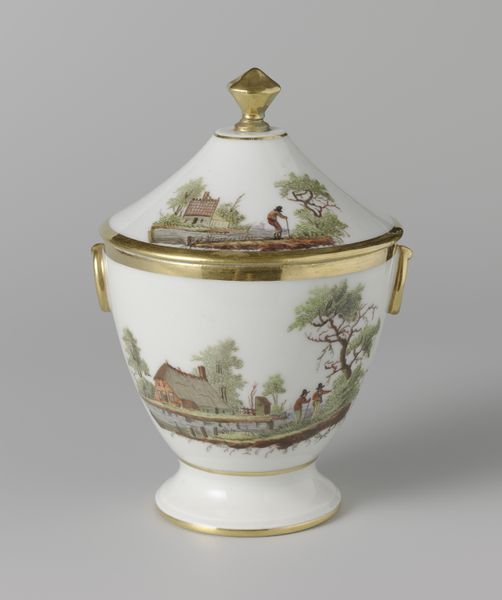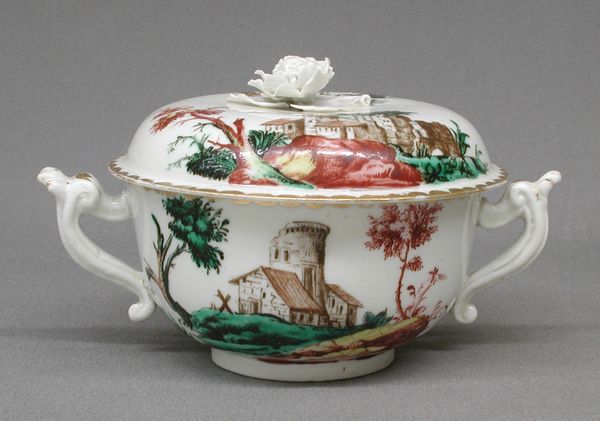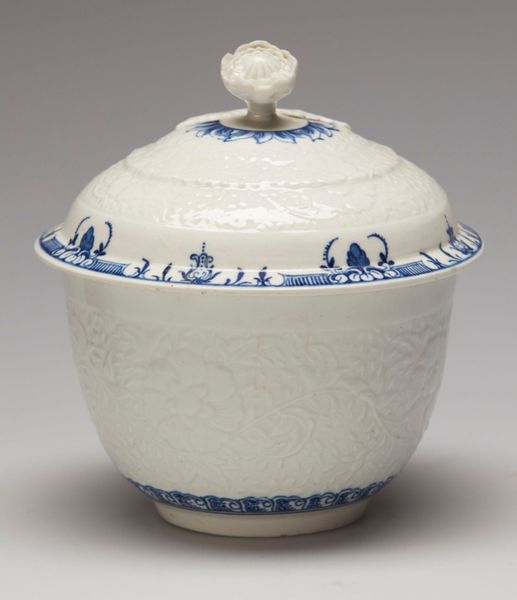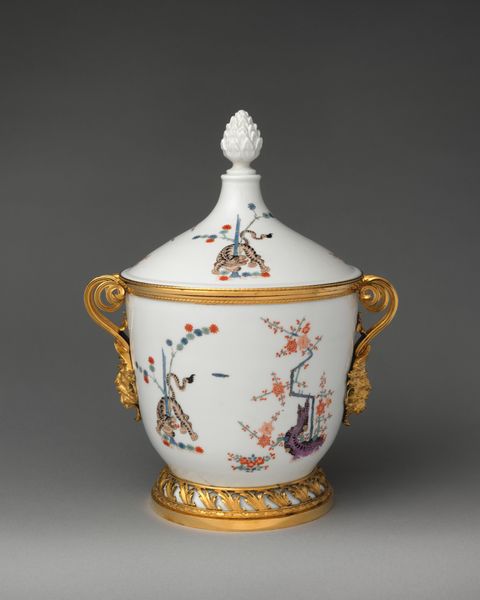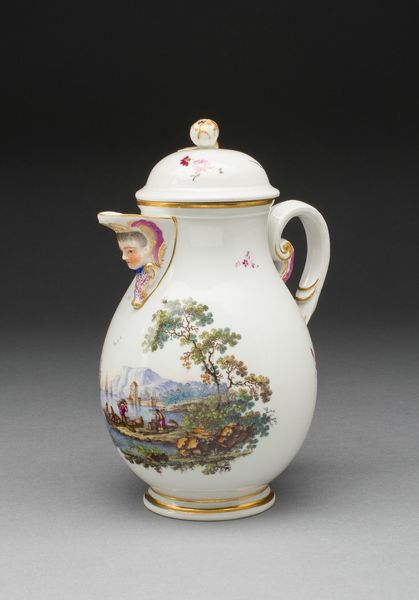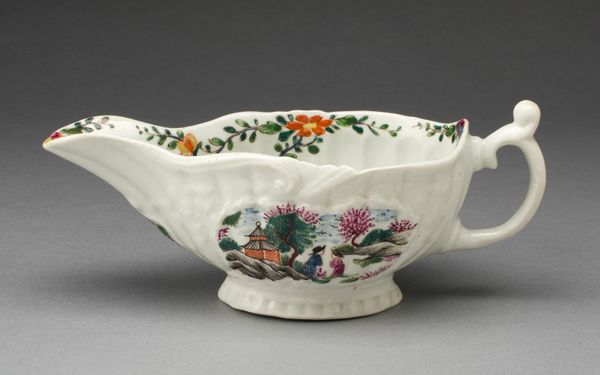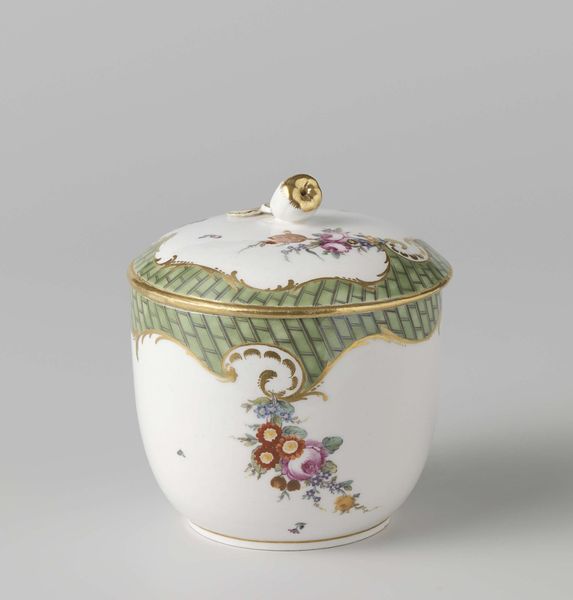
ceramic, porcelain, sculpture
#
ceramic
#
jewelry design
#
flower
#
porcelain
#
sculpture
#
ceramic
#
decorative-art
Dimensions: Height: 4 13/16 in. (12.2 cm)
Copyright: Public Domain
Curator: Before us is a porcelain bowl with cover, crafted between 1730 and 1745 by the Saint-Cloud factory. It resides here at the Metropolitan Museum of Art. Editor: It's charming, in a very deliberate way. The size suggests precious contents, while the slightly naive floral designs give it an approachable, almost whimsical character. Curator: Indeed. Note the meticulous rendering of floral motifs. The use of line and colour creates a structured, almost architectural, feel. It adheres strictly to symmetrical arrangement, reinforcing its formal purpose. Editor: Those stylised flowers immediately speak of a longing for pastoral scenes. Are these designs, with the repetitive floral forms in slightly subdued tones, alluding to fleeting beauty, perhaps as a commentary on courtly life? Curator: The imagery certainly invites such interpretations. We observe a careful balancing act between surface and form, function and ornament. The white porcelain acts as the perfect ground, a stage upon which these aesthetic signifiers play. The geometrical shape of the cover, too, is of note. Editor: The color choices—reds, blues, yellows— strike a delicate balance. Do the hues reflect certain emotional qualities favoured during the era, or could they even symbolise a specific patron’s family crest? I sense a quiet yearning embedded in its simple shapes. Curator: We can look deeper into the symbolic vocabulary to ascertain a definitive meaning. However, the bowl’s presence signifies luxury and careful craftsmanship, whether read literally or symbolically. The overall visual composition demonstrates precision. Editor: Despite its formal aesthetic, the playful floral patterns create an emotional bridge. I see it as more than a pretty objet. The Bowl with Cover resonates with an invitation to observe and appreciate both beauty and fragility. Curator: Precisely. Through colour, texture, and organization, it stands as a remarkable essay in decorative and practical design of the early 18th Century. Editor: Ultimately, this piece holds a secret language within its artistic structure, whispering across centuries.
Comments
No comments
Be the first to comment and join the conversation on the ultimate creative platform.

